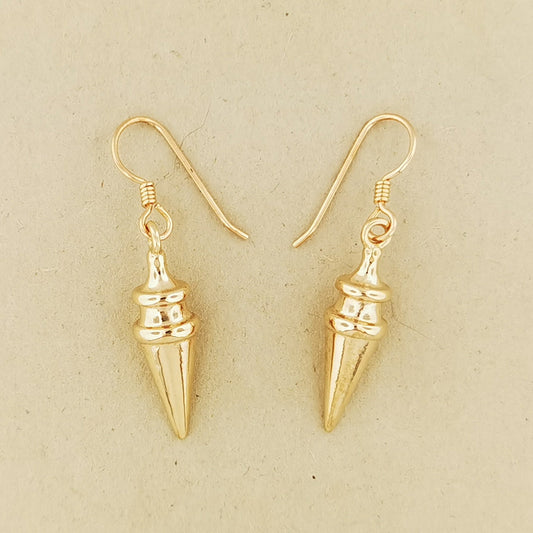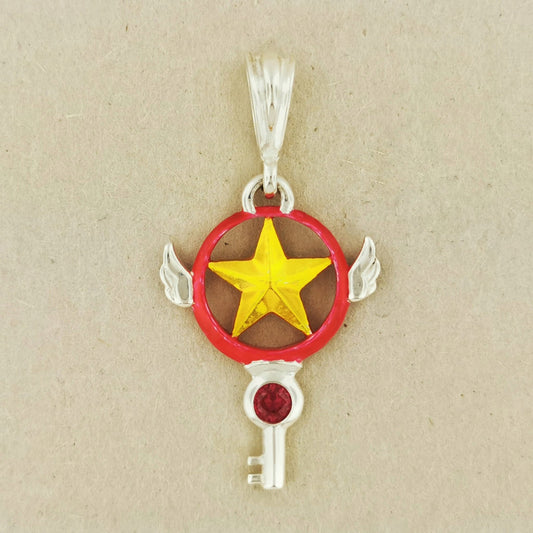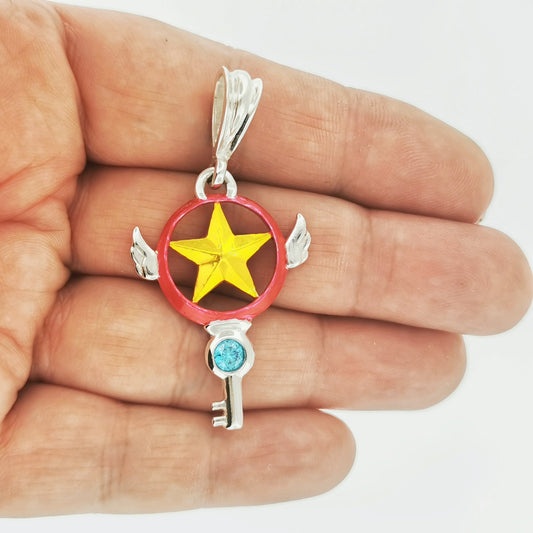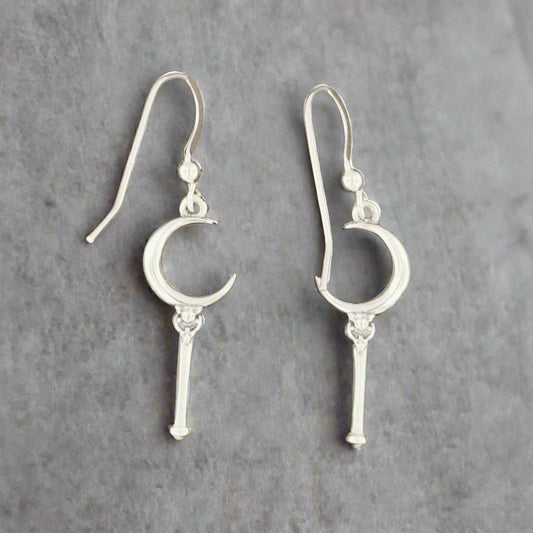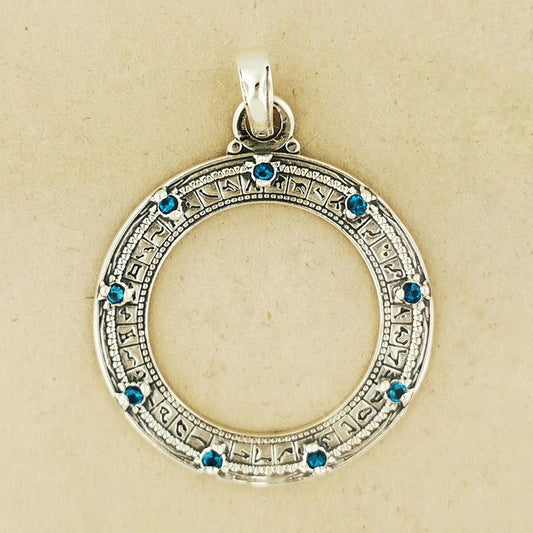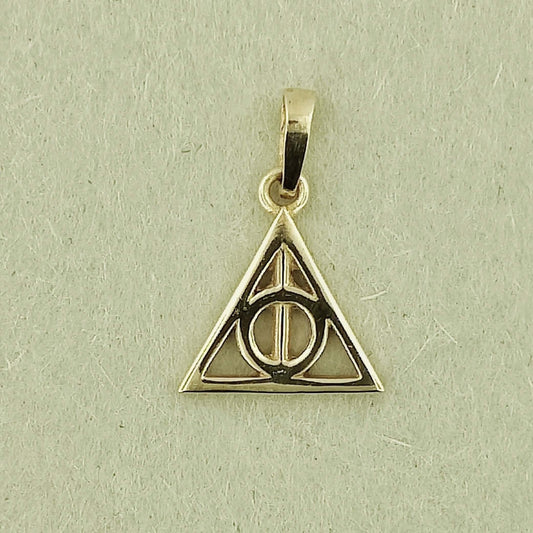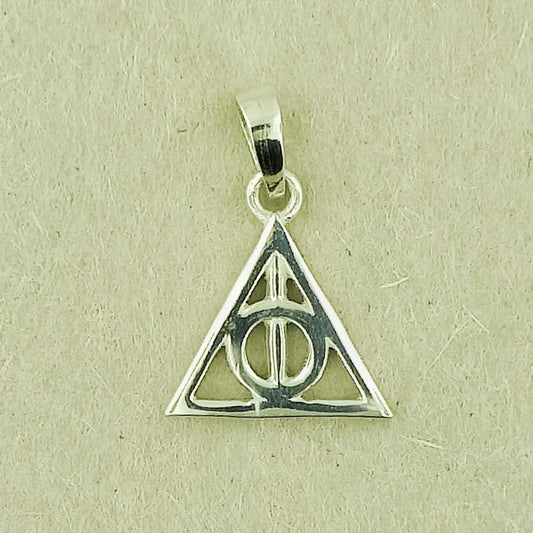Wicca vs. Modern Witchcraft: Two Paths, One Magic?

Though often lumped together, Wicca and modern witchcraft are quite different in their practices, beliefs, and philosophies.
Wicca, which became widely recognized in the 1950s thanks to Gerald Gardner, is a structured, nature-based religion. It has clear-cut rules and practices, focusing on a balance of masculine and feminine divine energies (the God and Goddess). Wiccans follow the Wiccan Rede, a guiding principle that promotes harm-free magic: "An it harm none, do what ye will." Wiccans also follow the Threefold Law, believing that the energy you send out into the world—whether good or bad—returns threefold, placing strong emphasis on ethical spellcraft.
Ladies Pentacle Ring In Sterling Silver
In contrast, modern witchcraft is much more freeform and personalized. Many modern witches mix and match from different spiritual traditions, incorporating tarot, crystal work, herbalism, and astrology, but they aren’t necessarily bound by religious dogma.
Zodiac Stud Earrings In Sterling Silver In The Sign Of Scorpio
Modern witchcraft may focus more on personal empowerment and intuitive magic, rather than adhering to any established set of rules. Unlike Wicca, which involves specific rituals and the veneration of deities, modern witchcraft is often less about worship and more about connecting with personal power and nature's energy in a way that feels right to the individual.
Small Triquetra Pendant In Sterling Silver
Why Wicca Has Structure
For Wiccans, rules are an essential part of the practice. The rituals, spells, and even ethical guidelines are meant to keep the balance of nature and avoid harm. Magic, in this context, isn’t just a tool for personal gain, but a spiritual practice tied deeply to one’s moral compass. The Wiccan Rede encourages practitioners to act responsibly in their spellwork, and the Threefold Law reinforces the idea that everything you do—good or bad—comes back to you, multiplied. This structure keeps Wicca focused on positive, healing intentions rather than reckless or harmful magic.
Wiccan Beliefs: Nature, Deities, and the Divine
At the heart of Wiccan belief is a deep reverence for nature and the cycles of life. Wiccans view the earth and all living things as sacred, often honouring nature through seasonal festivals, rituals, and spellcraft. The religion embraces a duotheistic belief system, centered on the Goddess and the God, representing the feminine and masculine energies of the universe.
Tree Of Life Pendant In Sterling Silver
These deities symbolize the duality of nature, such as light and dark, life and death, and growth and decay. Many Wiccans honour the Triple Goddess, who represents the Maiden, Mother, and Crone, aligning with the phases of the moon and the stages of a woman’s life.
Sterling Silver Lunar Goddess With Gemstone Moon Pendant
The God is often depicted as the Horned God, representing the wild, natural forces of life or the Green Man, representing nature, fertility and the life force of the earth. While some Wiccans may work with other deities from different pantheons, the Goddess and God remain at the core of most rituals and worship.
Green Man Pendant With Open Eyes In Sterling Silver
Rituals, Magic, and the Wheel of the Year
Wiccan practices are deeply tied to the changing seasons, with rituals celebrating the Wheel of the Year, which includes eight seasonal festivals known as Sabbats. These festivals, including Samhain, Beltane, and Yule, mark important transitions in the cycle of nature and are often observed with ceremonies, offerings, and spells. Each Sabbat has its own unique focus, from honoring ancestors at Samhain to celebrating the return of the sun during Yule.
Large Pentacle Pendant In Antique Bronze
Rituals in Wicca often include the use of a sacred circle for protection and focus, the invocation of deities, and the use of magical tools such as athames, wands, chalices, and pentacles. Spellcraft is an essential part of Wiccan practice, and it often involves working with the elements—earth, air, fire, and water—as well as herbs, crystals, and candles. The focus is always on creating positive change in the world, whether through healing, protection, or manifesting desires. Wiccans believe that the power of magic comes from within, as well as from their connection to the divine and natural world.
Small Knife Charm Athame Pendant In Antique Bronze
Why Choose Wicca?
For some, the structure and tradition of Wicca offer a reassuring path. Wiccans may be drawn to its ethical guidelines and the sense of community it fosters. The religion’s reverence for nature, balance, and harmony appeals to those seeking a deeper connection with the world around them. Many Wiccans find solace in its rituals, festivals, and connection to the changing seasons, aligning their spiritual path with the Wheel of the Year. Choosing Wicca also allows for a grounded, ethical approach to magic, offering both a spiritual and moral framework that resonates with practitioners.
The Rise of Modern Witchcraft
In recent years, modern witchcraft has seen a surge in popularity, often with the help of social media and influencers who celebrate magic in a more fluid, personalized way, often involving a number of beliefs and traditions from all over the world.
Winged Bastet Pendant In Antique Bronze
Figures like The Hoodwitch and Gabriela Herstik have made witchcraft accessible and appealing to a new generation, offering a modern twist that blends spirituality with self-care and empowerment.
Moon Phase Earrings In Sterling Silver
With less emphasis on religious rules and more focus on personal magic, modern witchcraft has become a flexible, empowering practice that appeals to those who want to dip into magic without the formalities of organized religion.
So whether you’re drawn to the structured beauty of Wicca or the free-spirited vibe of modern witchcraft, both paths offer unique ways to connect with nature, magic, and yourself.
Thanks for reading,












